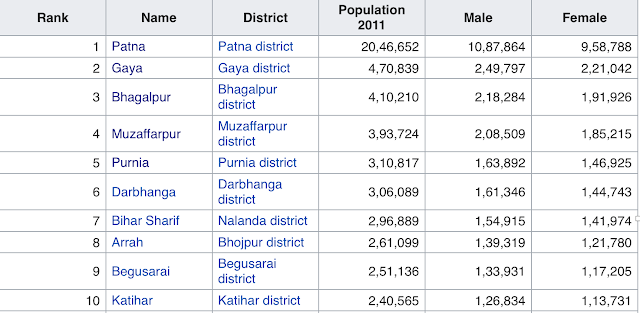Andhra Pradesh is located on India’s southeastern coast on the Bay of Bengal. It is India’s eighth largest state with an area of 162,970 square km. The 2011 census recorded a population of 49,386,799 inhabitants in the state, making it the tenth most populated state in the country. Visakhapatnam is the largest city of Andhra Pradesh but not its capital city. Andhra Pradesh has two capital cities, Hyderabad, the de jure capita, and Amaravati, the de facto capital that would soon replace Hyderbad as the only capital of the state.
What Is The Capital Of Andhra Pradesh?
Andhra Pradesh has two capital cities, Hyderabad which is the de jure capital, and Amaravati which is the de facto capital of Andhra Pradesh.
Hyderabad as the de jure capital of Andhra Pradesh
The city of Hyderabad serves as the capital of both the states of Andhra Pradesh as well as Telangana. The city is based on the banks of the Musi River and houses a population of about 6.7 million people. Hyderabad is located at an average elevation of 1,778 ft and is surrounded by numerous artificial lakes.
Hyderabad has a rich history and culture. It was ruled by several Muslim dynasties like the Qutb Shahi dynasty, Mughal dynasty, and finally the Nizams of Hyderabad. The Nizams left behind a rich legacy of architecture, cuisine, and culture that attracts numerous tourists to the city each year. Hyderabad served as the capital of the Hyderabad State of India, a princely state during the British Raj, and ruled by the Nizams. After Hyderabad State was included as part of the Indian Union in 1948, the city was included as the capital of Andhra Pradesh. The city also houses the Rashtrapati Nilayam, that serves as the President of India’s winter office. When, in 2014, the state of Telangana, a newly formed state, split from Andhra Pradesh, Hyderabad was also declared as the capital of Telangana. Under a transitional agreement that is scheduled to end by 2025, Hyderabad will serve as the capital of two states of Andhra Pradesh and Telangana.
Amaravati as the de facto capital of Andhra Pradesh
Amaravati is soon to be the only capital city of Andhra Pradesh. The city is currently the de facto capital of the state. It derives its name from the historic Amaravathi town in the Guntur district. Amaravati is a newly planned city that along with the neighboring Tenali, Guntur, and Vijayawada forms the Andhra Pradesh Capital Region. The population of this region was found to be 5.8 million in 2011, making it the state’s most populated region.
The Capital Region is associated with a lot of history and was ruled for centuries by various Indian dynasties that ended with the rule of the Nizam of Hyderabad. Amaravati is currently being developed at a rapid pace.
What Is The Capital Of Andhra Pradesh?
Andhra Pradesh has two capital cities, Hyderabad which is the de jure capital, and Amaravati which is the de facto capital of Andhra Pradesh.
Hyderabad as the de jure capital of Andhra Pradesh
The city of Hyderabad serves as the capital of both the states of Andhra Pradesh as well as Telangana. The city is based on the banks of the Musi River and houses a population of about 6.7 million people. Hyderabad is located at an average elevation of 1,778 ft and is surrounded by numerous artificial lakes.
Hyderabad has a rich history and culture. It was ruled by several Muslim dynasties like the Qutb Shahi dynasty, Mughal dynasty, and finally the Nizams of Hyderabad. The Nizams left behind a rich legacy of architecture, cuisine, and culture that attracts numerous tourists to the city each year. Hyderabad served as the capital of the Hyderabad State of India, a princely state during the British Raj, and ruled by the Nizams. After Hyderabad State was included as part of the Indian Union in 1948, the city was included as the capital of Andhra Pradesh. The city also houses the Rashtrapati Nilayam, that serves as the President of India’s winter office. When, in 2014, the state of Telangana, a newly formed state, split from Andhra Pradesh, Hyderabad was also declared as the capital of Telangana. Under a transitional agreement that is scheduled to end by 2025, Hyderabad will serve as the capital of two states of Andhra Pradesh and Telangana.
Amaravati as the de facto capital of Andhra Pradesh
Amaravati is soon to be the only capital city of Andhra Pradesh. The city is currently the de facto capital of the state. It derives its name from the historic Amaravathi town in the Guntur district. Amaravati is a newly planned city that along with the neighboring Tenali, Guntur, and Vijayawada forms the Andhra Pradesh Capital Region. The population of this region was found to be 5.8 million in 2011, making it the state’s most populated region.
The Capital Region is associated with a lot of history and was ruled for centuries by various Indian dynasties that ended with the rule of the Nizam of Hyderabad. Amaravati is currently being developed at a rapid pace.

































